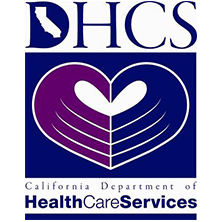Inpatient Drug Rehab Vs. Outpatient Drug Rehab
Bipolar disorder is defined as a chronic mental condition with the ability to cause mood swings and the inability to make decisions clearly. Individuals diagnosed with bipolar disorder present both high and low moods which are clinically known as mania and depression. Mania and depression vary from typical ups and downs, and if left untreated, they can get worse over time.1 Despite worsening symptoms, most affected individuals can lead a better life with a good treatment program. Bipolar disorder is an adverse condition which has the ability to cause risky behaviors characterized by suicidal tendencies. It can also be managed through therapy and medication. Our Orange County bipolar treatment center is here to provide these services.

The two main types of treatment for addiction are inpatient and outpatient rehab. Inpatient drug rehab in California involves living at a residential center while undergoing treatment. Outpatient rehab involves living at home while attending daily rehab programming at an outpatient treatment center. When you first seek treatment, a variety of assessments will inform your treatment plan. A team of clinical and medical professionals will help you determine the best approach of treatment for you. In general, inpatient addiction treatment programs offer the best outcomes, but outpatient treatment can work in some instances.
According to the National Institute on Drug Abuse, staying in an inpatient drug rehab in California for an adequate period of time is essential for successful recovery, and anything less than 30 days is considered to be of limited effectiveness (2). Our inpatient drug rehab facility in California offers a strong sense of belonging, and it provides time away from triggers, including the people, places, and various circumstances that can trigger cravings.
Outpatient Drug Rehab
Outpatient addiction treatment is less expensive than inpatient drug rehab, and it enables participants to live at home and continue working, going to school, or caring for family while in treatment. In order for outpatient treatment to be effective, participants should have:
- A safe and stable environment at home
- A high level of support at home and in the community
- Good physical and mental health apart from the addiction
- A high level of intrinsic motivation to recover
- Reliable daily transportation to the treatment center
Outpatient treatment typically involves around nine hours of programming each week, while intensive outpatient treatment may require up to 20 hours of attendance each week.
Inpatient Drug Rehab
Inpatient drug rehab in Orange County, California provides a high level of structure, supervision, and support in the early weeks of recovery. Inpatient addiction treatment enables focus on recovery in a safe, nurturing environment. Inpatient treatment is essential for people who have:
- An unsafe or unstable living environment
- Little support at home or in the community
- Been through rehab before
- A co-occurring mental illness or an under-treated medical illness
- Little intrinsic motivation to stop using drugs
- Severe or numerous problems or stressors in daily life
Two main types of inpatient treatment are short-term and long-term residential inpatient rehab. Short-term residential treatment typically lasts between 30 days to six months, while long-term inpatient rehab typically lasts between six and 12 months.
Medical Drug and Alcohol Detox
Medical drug and alcohol detox in Orange County, California is the first step of treatment in an inpatient addiction rehab program. Medical detox for drug and alcohol addiction addresses the physical dependence on drugs, which occurs as a result of changes in chemical brain function as the brain attempts to maintain normal operation despite the frequent presence of drugs. Dependence is characterized by withdrawal symptoms that set in when use suddenly stops.
- During medical drug and alcohol detox, medications will be administered as needed to reduce the severity of withdrawal symptoms, including cravings, anxiety, depression, or physical ailments like nausea and body cramps. In the case of opioid dependence, medication-assisted treatment involving methadone or buprenorphine is an option that allows for the bypass of withdrawal all together.
- Medical detox for drug and alcohol addiction offers a high level of moral support from both staff and peers in recovery. Many high-quality inpatient programs offer complementary treatments during medical detox to improve a sense of well-being and promote positive feelings. These often include restorative yoga, massage therapy, acupuncture, and meditation. Abscesses
- A range of assessments will be conducted during medical detox. These will help providers determine the severity of the addiction, its underlying causes, the issues in life that led to addiction, and the damage the addiction has done. The assessments will help providers develop an individualized treatment plan that addresses unique needs, issues, and challenges.
Treating The Addiction
Once detox is complete, attention turns to treating the addiction. Addiction is far more complex than dependence, and it requires a holistic approach to treatment for the best outcomes, according to the Substance Abuse and Mental Health Services Administration (3). A holistic approach involves treating issues of body, mind and spirit for whole-person healing. A variety of both traditional and complementary therapies in both group and individual settings are used to achieve this.
One of the main benefits of inpatient rehab is the level of structure and support that it provides. Inpatient rehab offers a safe and controlled environment where individuals can focus solely on their recovery. This can be particularly beneficial for individuals who have severe addictions or who have experienced multiple relapses in the past.
Inpatient rehab also offers a wide range of therapeutic and educational programs that are tailored to the specific needs of each individual. These programs may include individual therapy, group therapy, family therapy, and educational classes on topics such as addiction, coping skills, and relapse prevention. The goal of these programs is to help individuals understand the root causes of their addiction and develop the skills they need to overcome it.
Another benefit of inpatient rehab is the level of medical supervision that is provided. Many inpatient rehab programs have medical staff on-site who can provide medication-assisted treatment (MAT) and monitor the individual’s physical and mental health during the detox process. This can be particularly important for individuals who have co-occurring medical or mental health conditions.
Inpatient rehab also provides individuals with a sense of community and support. In many cases, individuals who are struggling with addiction feel isolated and alone. Inpatient rehab offers a supportive environment where individuals can connect with others who are going through similar experiences. This can be a powerful tool in promoting recovery, as individuals can learn from each other and gain a sense of hope and encouragement.
Inpatient rehab also offers a continuity of care that can be hard to find in other treatment options. This is important as addiction is complex and requires a comprehensive approach. Individuals are not only treated for their addiction but also for any underlying issues that may have contributed to the addiction. This holistic approach is more effective in ensuring long-term recovery and reducing the risk of relapse.
Addiction has a variety of underlying causes, which often include chronic stress, a history of trauma, family dysfunction, or a co-occurring mental illness. Additionally, addiction causes a range of problems in life, including health, financial, legal, and relationship problems. Successful recovery depends on addressing all of an individual’s needs, according to the National Institute on Drug Abuse’s Principles of Effective Treatment (4).
While individual goals of therapy will vary from person to person, the overarching goal of therapy is to remove barriers to recovery. Through therapy, people in treatment:
- Identify unhealthy thought and behavior patterns and learn to think and behave in new, healthier ways.
- Address and resolve the underlying issues behind the substance abuse that led to the addiction.
- Develop essential coping skills for dealing with stress, negative emotions, cravings, and other powerful relapse triggers.
- Repair the damage done by the addiction, including damaged relationships, finances, physical and mental health, and legal problems.
- Develop a healthy lifestyle that includes a high level of self-care.
- Find purpose and meaning in life without drugs.
- Set goals to achieve an ideal life.
- Learn to relax and have fun without drugs.
Mitigating triggers, resolving long-held issues and problems, and developing an enjoyable sober lifestyle are central to successful recovery. The ultimate goal of treatment is to remove the need and desire to use drugs by improving life on every front.
What To Look For In an Inpatient Addiction Treatment Center in
Orange County, California
Inpatient addiction treatment is a type of treatment that is designed for individuals who are struggling with addiction and require more intensive and comprehensive care. This type of treatment is typically provided in a residential setting, where individuals live at the treatment center for a certain period of time and receive round-the-clock care and support.
Inpatient addiction treatment typically begins with an intake assessment, which is used to determine the individual’s specific needs and treatment goals. This assessment may include a physical examination, psychological evaluation, and an assessment of the individual’s substance use history.
Once the assessment is complete, the individual will be placed in a treatment program that is tailored to their specific needs. This may include individual therapy, group therapy, and a variety of other therapies and activities.
Benefits of Attending an Inpatient Addiction Rehab Center:
- 24/7 medical supervision: Inpatient rehab centers provide around-the-clock medical supervision to ensure the safety and well-being of patients during the detoxification process.
- Individualized treatment plans: Patients receive a customized treatment plan tailored to their unique needs and circumstances.
- Structured environment: Inpatient rehab centers offer a structured schedule of activities and therapy sessions, which can provide a sense of stability and routine for individuals in early recovery.
- Supportive community: Inpatient rehab centers provide a supportive community of peers who are also in recovery, which can be a valuable source of support and encouragement.
- Focus on self-improvement: Inpatient rehab centers offer a variety of therapy and counseling options, such as cognitive behavioral therapy and group therapy, to help patients understand and address the underlying issues that contribute to their addiction.
How The Program Works:
- Assessment: Upon arrival at the rehab center, patients undergo an initial assessment to determine their current level of addiction, physical and mental health, and any co-occurring disorders.
- Detoxification: The first step in the treatment process is detoxification, during which patients receive medical supervision as they withdraw from the substance they are addicted to.
- Therapy and counseling: Once detox is complete, patients begin a variety of therapy and counseling sessions. These may include individual therapy, group therapy, and family therapy.
- Aftercare planning: As the patient nears the end of the treatment program, the treatment team will work with the patient to develop an aftercare plan. This plan may include continuing therapy or counseling, participation in a support group, and other resources to help the patient maintain their recovery after leaving the rehab center.
What Happens After Inpatient Drug Rehab In California?
Once an inpatient treatment in Orange County, California is complete, an individualized aftercare plan is developed to help navigate the early weeks and months of solo recovery. The aftercare plan will include a range of resources, services, and interventions that meet ongoing needs. A typical aftercare plan will include ongoing therapy through an outpatient program, continued management of any medical or mental illnesses, and daily participation in a support group. Other components of the aftercare plan may include housing and educational or vocational assistance.
The aftercare plan is monitored by a case manager, who reviews it periodically and makes changes that reflect changing needs.
Resources
https://www.drugabuse.gov/publications/drugfacts/understanding-drug-use-addiction
https://www.drugabuse.gov/publications/principles-drug-addiction-treatment-research-based-guide-third-edition/frequently-asked-questions/how-long-does-drug-addiction-treatment
https://store.samhsa.gov/shin/content/PEP12-RECDEF/PEP12-RECDEF.pdf
https://www.drugabuse.gov/publications/principles-drug-addiction-treatment-research-based-guide-third-edition/principles-effective-treatment
SAFE HARBOR TREATMENT CENTER
Our Dedicated Inpatient Addiction Treatment in Orange County
Treatment works for most people who engage fully with their treatment plan and stay in treatment for an adequate amount of time. Just as it takes time to develop the unhealthy lifestyle and thought and behavior patterns that underlie addiction, it takes time to re-learn healthy ways of thinking and behaving and develop a lifestyle that promotes ongoing recovery.
In treatment, strive for complete honesty, and keep an open mind. You’ll be rewarded with astonishing and life-changing revelations about yourself that will drive your recovery and improve your quality of life and sense of well-being for a happier, healthier future.




